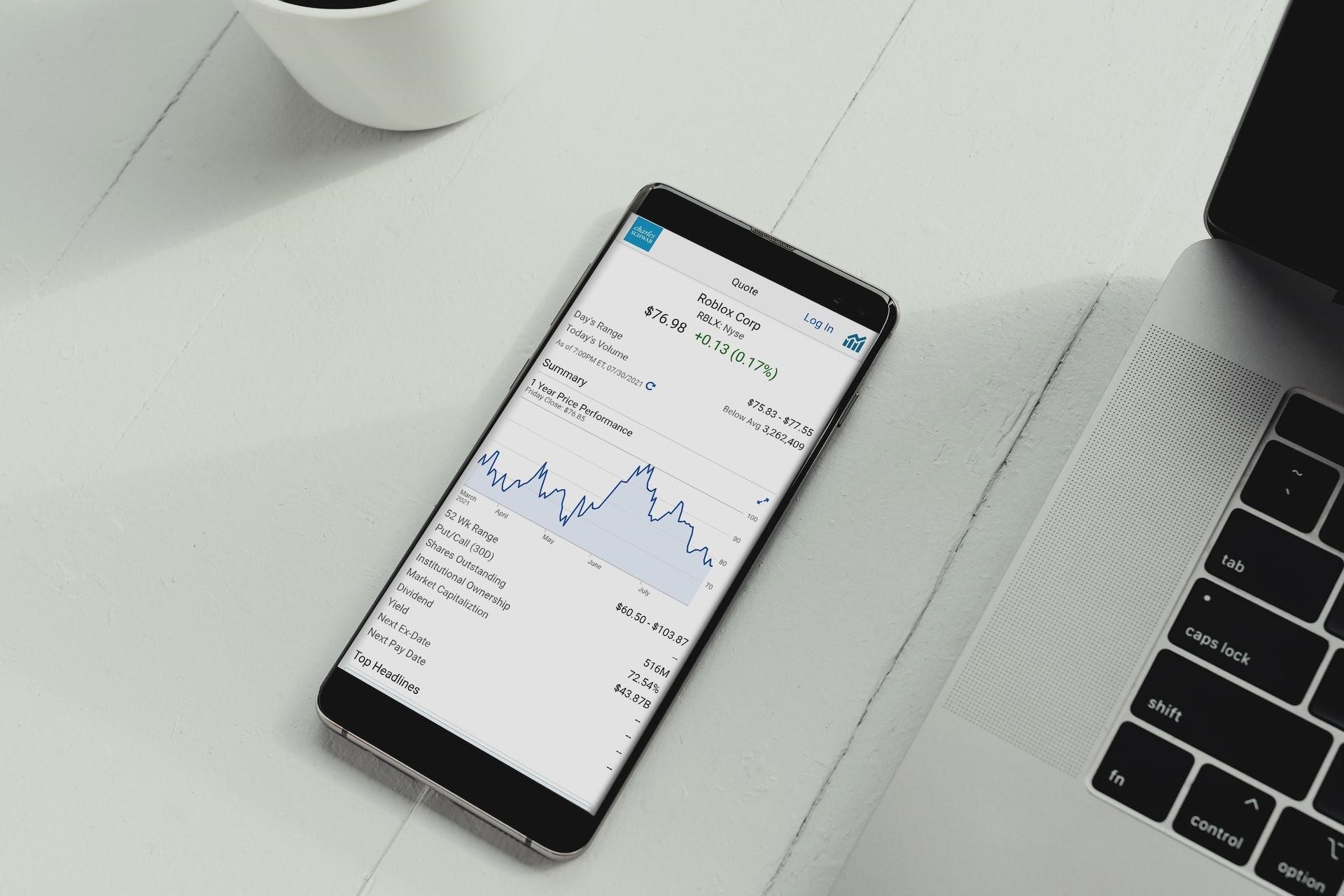What Is Forex Leverage?
![]()
 >
>
Source:
Ayadi Ghaith/Unsplash
What is Forex leverage? How
do you use it and what should you bear in mind while trading Forex? Just2Trade
explains – in this definitive guide, you'll learn everything you need to know
about leverage in Forex, including how to choose the
best leverage level, how to calculate it, how leverage relates to margin, and
much more. So just read carefully, take some notes, and let's have a look at
how leverage works together!
Table of Contents
What is Leverage?
How Do You Use Leverage in Forex?
What is the Margin?
How Much Leverage Should I Use?
How to Choose the Best Leverage Level?
How Can I Use Leverage Safely?
Some Tips for Trading Forex with Leverage
How to Calculate Leverage in Forex?
FAQ
What Is Leverage?
In the Forex world, leverage is akin to a
"loan" that the broker extends to the trader in order to provide the
latter with more trading money than was initially provided.
How Do You Use Leverage in Forex?
Leverage
in Forex trading refers
to the capacity to open a position with a value greater than the funds
available in your brokerage account. Simply put, it refers to the capability of
borrowing credit from your Forex broker to execute
larger deals.
Leverage Example
Imagine you
have $1,000 in your foreign exchange account. You invest the full amount of
your account in Canadian currency because you think the value of the currency
will soon increase. When you buy, you add approximately CA$1,327 to your
account because $1 is equal to CA$1.327.
In the end,
the U.S. dollar loses value compared to Canadian dollars; $1 is now only worth
CA$1.320. You sell your currency and get roughly $1,005. This means that,
before paying broker costs, your profit will be around $5.
What Is Margin?
Margin is
the percentage of your funds that your Forex broker sets aside from the balance
of your account to keep your trade open and to ensure that you have enough
funds to cover any potential losses. This percentage is "locked up"
or "utilized" for the duration of the trade.
Forex vs. Stock Margin Accounts
You likely have some familiarity with margin
accounts if you've ever traded stocks. There are a few significant differences,
though, that you should be aware of.
|
Difference
|
Stock Margin Account
|
Forex Margin Account
|
|
Interest
|
Most
stock brokers charge interest on your margin and treat it like a loan.
|
Forex
brokers hardly
ever charge interest for the leverage you use.
|
|
Size
|
Leverage
usage is restricted by stockbrokers. A stock account normally has a maximum
margin of 2:1.
|
Leverage
is much more popular with Forex brokers. The minimum margin that is normally
offered is roughly 10:1.
|
|
Calls
|
A margin call happens when a trade moves against the trader
and the broker demands that they deposit additional funds to make up the
difference. In stock trading, margin calls
are frequent.
|
Margin
calls typically don't affect Forex traders.
|

Source:
PiggyBank/Unsplash
How Much Leverage Should You Use?
Leverage
appeals to many Forex traders because it does not require them to invest
thousands of dollars to start making significant gains. However, it is
important to keep in mind that leverage can also be extremely risky, especially
for novice traders. A leverage of 100:1 can result in losses that are 100 times
greater. This means that while significant returns with a modest investment are
possible, it is also very easy to lose your entire initial investment.
How to Choose the Best Leverage
Level
When trading Forex, it's important to choose the leverage level
that you're most comfortable with. The ideal leverage level for trading on the
Forex market is often 1:100. For example, if you invest $1,000 and the leverage
is 1:100, you can trade up to $100,000. This allows for more frequent trading.
Traders with limited capital often prefer trading on margin (or with leverage),
as their initial investment is insufficient to open a significant number of trading positions. Again, the most common leverage in Forex is
1:100.
How Can You Use Leverage Safely?
When using
leverage, there are a few actions you can take to protect your initial
investment. Let's look at a few pointers you can utilize to trade with leverage
more wisely.
Use Stop-Loss Orders
A type of
sell order called a stop-loss order helps you limit the overall loss you'll
sustain on your trade. When you place a stop-loss order, you are telling your
broker that you want to sell your holding currency as soon as it reaches a
specific price.
When trading currencies, always establish a stop-loss order,
especially if you won't be actively tracking prices on an hourly basis. We
advise putting no more than 2% of your entire capital at risk in any given
trade.
Trade Major Currency Pairs
When you
are first starting Forex trading, you
should only trade major currencies. Some of the most frequently and
consistently traded currencies include USD, CAD, EUR, and JPY. These currencies
are linked to established, robust economies, so it's unlikely that they will
rapidly lose a significant portion of their value. Until you are really sure
about your trade, stay away from currencies of emerging nations or nations
going through political or economic unrest.
Do Your Leverage Research
Knowledge
is power in the world of Forex trading, as it is in all other forms of trading.
Make sure you are aware of what you are getting into before funding your Forex
account or considering placing your first trade. Find out which currency pairs
are most frequently traded, understand the differences between technical and
fundamental analysis, and test out your broker's trading platform by placing a
few practice orders.
Exit Positions Before They Get Out
of Hand
You should monitor your investments carefully
and exit problematic ones before they get out of hand. It’s easy to say this
from behind a keyboard, but it's crucial to keep in mind that many investments
fail immediately and continue to cause issues until you sell them and take a
loss.
Some Tips for Trading Forex with
Leverage
We'd also like to provide you with some helpful
tips for trading Forex with leverage – below, you'll see what you should always
keep in mind:
● Try to keep your
leverage levels modest.
● Limit your investment
in each position you take to 1%–2% of your overall trading capital.
● Cut your losses rather
than attempt to add to a failing situation.
● Reduce risk and
safeguard your wealth by using a stop loss or trailing stop.
How Do You Calculate Leverage in
Forex?
How can you calculate leverage in Forex? We
advise you to use the leverage calculation provided below:
Leverage = 1/Margin = 100/Margin Percentage
Here's an example for better understanding:
If the margin is 0.02, then the margin
percentage is 2%, and the leverage = 1/0.02 = 100/2 = 50.

Source:
Glenn Carstens-Peters/Unsplash
FAQ
Still have any questions about Forex leverage?
If so, you can take a closer look at the FAQ list we've provided below – there,
you'll definitely find the answers to all of your remaining questions.
Is leverage a good way to invest?
Although
investing using leverage has the potential to yield enormous profits, there is
also a high risk of losing money and incurring debt.
Why is the leverage so large in Forex markets?
The common
belief among traders is that Forex market makers provide high leverage because
they perceive it as a function of risk. If they didn't believe that the risk
could be relatively controllable with proper account management, they would not
be offering such high leverage.
Can I trade without leverage?
Although it
is generally recommended for an inexperienced trader to use leverage to
increase their trading account, it is not always
essential. Beginners can trade without using leverage and still make money as
long as they have the necessary capital to begin trading.
How does leverage relate to margin?
The usage
of margin by a trader allows for leveraged trading. You are given more
purchasing power with a margin account. You can trade larger positions than the
amount of money in your account with the help of leverage. The link between
leverage and margin is inverse – your leverage ratio will
be lower as your margin requirement increases.
How does Forex work?
Forex (Foreign Exchange) is a
vast network of currency traders that buy and sell currencies at set rates, and
this type of transfer necessitates changing one country's currency into
another. Since all trades in the Forex market are carried out electronically
over the counter (OTC), the FX market is
decentralized and all transactions are carried out over computer networks.
What is the Forex market?
The Forex market is the largest and busiest market in the world,
with a daily average turnover of $6.6 trillion in 2019 (compared to $1.9
trillion in 2004). It is based on unrestricted currency conversion, meaning
that there is no government intervention in exchange activities.
What is Forex trading?
Forex
trading is the act of buying and selling currencies at predetermined prices,
with the aim of making a profit from the difference in value. It is a highly
liquid and volatile market that operates 24 hours a day, five days a week.
What is the best Forex trading platform?
The choice of a Forex trading platform depends on
an individual's specific needs and preferences. While Just2Trade may be a good
platform for some traders, it may not be the best for others. It is recommended
to research and compare multiple platforms before choosing the one that suits
you best.